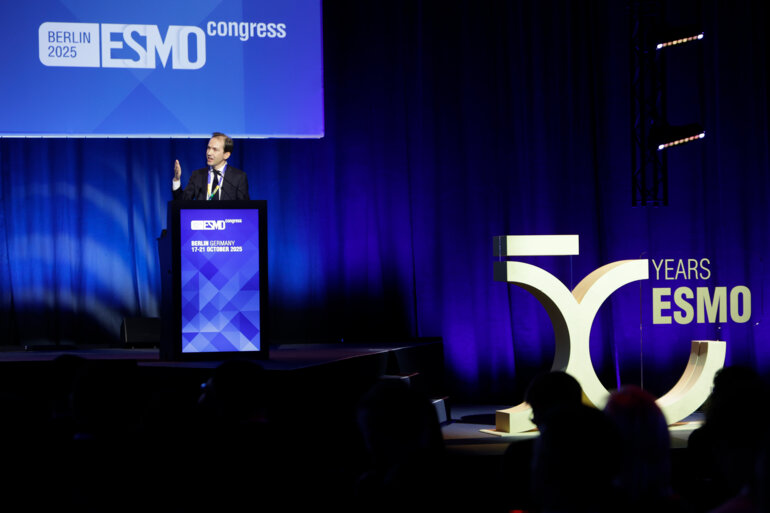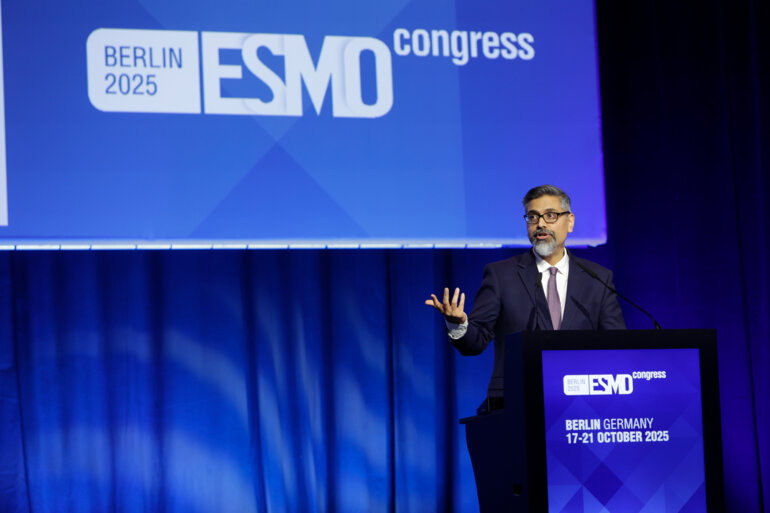Additional analysis from the NIAGARA study were presented
Additional analysis from the NIAGARA study reported survival benefits of perioperative durvalumab with neoadjuvant chemotherapy (NAC) in both patients with muscle-invasive bladder cancer (MIBC) achieving a pathological complete response (pCR) and those not achieving a pCR, and a reduction of the risk of developing metastases and cancer-related death. Data were presented at the ASCO Genitourinary Cancers Symposium 2025 (Abstract 659), and provide further support to the use of the immunotherapy-based treatment as a potential new option for cisplatin-eligible patients.
Practice-changing results from the NIAGARA trial were firstly discussed at the ESMO Congress 2024, showing that perioperative durvalumab compared to NAC plus surgery led to a significant increase in event-free survial (EFS) and overall survival (OS), respectively 67.8% versus 59.8% and 82.2% versus 75.2% at 2 years. The trial recruited 1,063 patients with MIBC eligible for cisplatin treatment and planned to undergo radical cystectomy. Patients were randomised (1:1) to neoadjuvant durvalumab plus NAC (cisplatin plus gemcitabine) followed by radical cystectomy then adjuvant durvalumab monotherapy, or NAC followed by radical cystectomy alone. Radical cystectomy was completed in 88% of patients in the durvalumab arm and in 83% in the NAC plus surgery arm (N Engl J Med. 2024 Nov 14;391(19):1773-1786).
Novel data show that patients in the durvalumab arm had a 33% reduction in risk of developing distant metastases or death (hazard ratio [HR] 0.67; 95% CI 0.54–0.83; nominal P,0.001) and 31% reduction in risk of death from bladder cancer (HR 0.69; 95% CI 0.52–0.91; nominal P=0.008) compared to patients treated with NAC plus surgery. The pCR was 37.3% (95% CI, 33.2-41.6) in the durvalumab arm and 27.5% (95% CI, 23.8-31.6) in the comparator arm. Overall, the addition of durvalumab to standard therapy demonstrated to be effective in prolonging EFS and OS in in both pCR (EFS HR 0.58; OS HR 0.72) and non-pCR (EFS HR 0.77; OS HR 0.84) groups.
No new safety concerns were reported, and the immune-mediated adverse events were mostly low grade and consistent with those with the known profile of durvalumab.






